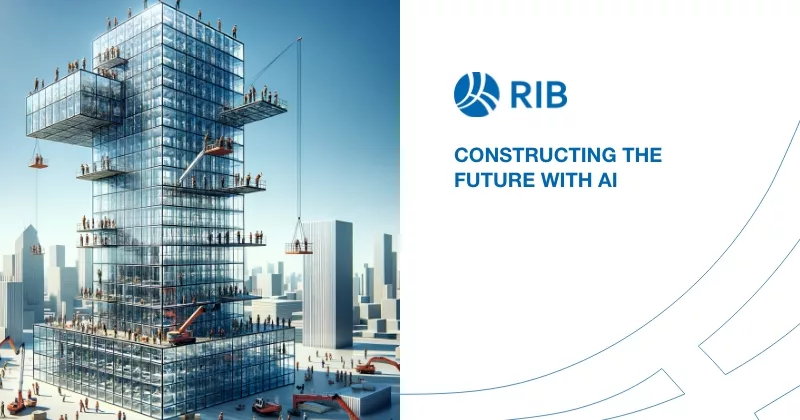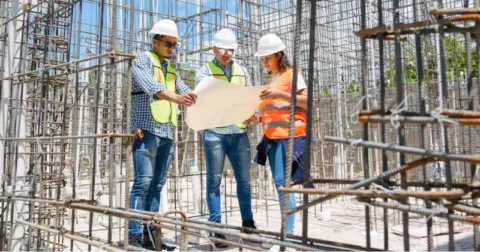7 mins read
Executive Board Member Michael Wardian Speaks About Sustainability In Prefabrication
6 mins read

The technologies and the building materials that we bring into top form for this purpose are the sustainable basis for a future-oriented infrastructure. Kirchdorfer Concrete Solutions has set itself the goal of producing more climate-friendly concrete by 2030. In order to be able to achieve the defined sustainability target of Concrete30 (concrete to the power of 30), the increase in recycling of aggregates by 30% and the saving of 30% in binding agents and transport by 2030, a comprehensive approach to climate-neutral and energy-efficient business is required.
Can You Give Us A Brief Overview Of Precast Conrete Construction?

What Exactly Does It Mean? How Long Does It Exist? How Has This Sector Evolved? And Why Is It Important And Capable Of Growth?
The history of reinforced concrete starts with Joseph Monier (1823 – 1906), a gardener who wanted to create the ideal (economically efficient & durable) flowerpot for greenhouse plants, as a replacement for wooden flowerpots. First he made flowerpots from “cement”, a mixture of cement, sand, slag or gravel and water) and iron mesh. He exhibited his invention at the International Exposition of 1867 in Paris and applied for his first patent for garden containers, which was granted to him under the number 77165. -> July 16, 1867: “System of mobile iron and cement basins applicable to horticulture”.
Monier obtained also a patent on sleepers, as well as patents on iron-reinforced concrete tanks, containers, pipes, basins and panels. This was the beginning of precast concrete elements or reinforced concrete construction.
Two aspects are essential for precast conrete construction. The first one is the production of precast concrete elements in one plant or in temporary production halls (directly at the construction site, such as segment production). The second is the transport and assembly of precast concrete elements at the construction site. The precast concrete construction industry is currently strongly moving towards digitalization and robotics that counteract the shortage of workers on the construction site.
In the last few years, we have launched strong investment initiatives within Kirchdorfer Concrete Solutions, the precast concrete division of the Kirchdorfer Group. However, it is also necessary to have internally qualified technical staff and managers in order to meet this challenge. The machine or IT supplier provides the basis. The company-specific adaptations are often underestimated, but they are no less important.
What Do You Think Are The Latest Global Trends In Prefabrication And Modular Construction? Is The Segment Becoming More Important And In Which Contries In Particular?

We clearly observe a steady growth and an enormous demand for smart modular construction which partly combines materials such as concrete and wood. In our XC product range of MMK, a joint venture of the Kirchdorfer Group together with Mayr Melnhof GmbH, we combine the best features from these two construction materials. Modular construction is not a new concept. For years, it has been existing in different forms and with different materials. Nevertheless it is necessary to cope with the individual plans of each customer and project. Different construction cultures have been created in Europe which can only partially be served by the modular construction and the adjustments cannot be made overnight. Due to increasing costs, is standardisation one of the greatest solution nowadays.
How Does Precast Concrete Construction Contribute To The Reduction Of Gas Emissions?

The added value is based on the calculation of a detailed carbon footprint for defined product groups according to ecological criteria. Based on this calculation, our products will contain a higher proportion of recyclable material in the future, following our internal sustainability goal. We will produce using low-carbon concrete and reduce thus carbon emissions within all of our logistics operations. Furthermore, we are developing multifunctional products – such as our “noise protection wall for power plants”. Resource conservation, energy efficiency and the production of renewable energy contribute to the ecological optimization of our production processes. The KIRCHDORFER GROUP has been fully aware of its corporate social responsibility since its foundation. For example, by setting ambitious goals and introducing a series of product innovations, KIRCHDORFER CONRECTE SOLUTIONS is aligning its infrastructure portfolio with sustainability and safety. We are looking for unusual and new approaches at regular innovation board meetings by focusing on specific research themes as:
| for example, resource conservation (concrete 30 to the power of 3)
| 30% CO2 Reduction in cement
| 30% CO2 Reduction in transport
| 30% recycling materials
| circular economy (upcycling of roadway slabs)
| optimization of concrete mixes (CD Laboratory, geopolymer concrete, …)
| solutions HPFC (High Performance Fibre Concrete)
Are There Other Factors That Make Prefabrication Attractive As A Construction Technology For Today And Future Generations?

| High quality, environmental and occupational health and safety standards due to serial production
| High capacities, therefore rapid availability -> reduction of construction time
| Simple and documented assembly, supported by digital documentation including location of prefabricated parts
| Circular economy: expansion, disassembly, crushing, reuse and recycling as recycled aggregate for prefabricated parts
| Intelligent collection of product data (BIM)
| ISustainable product design: light, lean and optimized concrete mixes
Most Recent
7 mins read
3 mins read
5 mins read
5 mins read

Ebook


